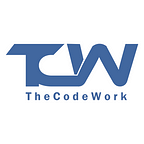What is Digital Twin and How can it be used in Education?
As higher education leaders and their CIOs, CTOs, and Technology Directors dive deeper into the conversation on Digital Transformation and Education 4.0, they are also learning about Digital Twin Technology and its benefits in the Education Sector.
But, what is Digital Twins technology and how can it serve the university of the future?
What is Digital Twin Technology?
Digital Twin technology refers to the creation of a virtual replica of a physical object, system, or process. These replicas, or “twins,” are designed to simulate the real-world counterpart’s behaviours and characteristics through real-time data and advanced analytics.
The digital twin integrates data from various sources to provide a comprehensive and dynamic representation of its physical counterpart, enabling monitoring, analysis, and optimization.
How Does Digital Twin Technology Work?
Digital twins operate by collecting data from sensors embedded in the physical entity. This data is processed and analyzed to create a digital model that mirrors the physical object in real-time.
Machine learning algorithms and advanced analytics enhance the twin’s ability to simulate different scenarios, predict outcomes, and provide actionable insights.
How the Education Sector Can Use Digital Twin Technology
The education sector can harness the power of digital twins to transform teaching, learning, and administrative processes.
Here are some detailed use cases and real-time examples:
1. Enhanced Learning Experiences
Simulation-Based Learning: Digital twins can create immersive learning environments where students can interact with virtual replicas of real-world objects and systems.
For instance, engineering students can use digital twins to simulate machinery or infrastructure projects, allowing them to test designs and troubleshoot issues without physical constraints.
Example: The University of Sheffield’s Advanced Manufacturing Research Centre (AMRC) uses digital twins to allow students to engage in virtual manufacturing processes, enhancing their understanding of real-world manufacturing environments.
2. Personalized Education
Data-Driven Insights: Digital twins of students’ learning profiles can help educators track progress and tailor learning experiences to individual needs. By collecting data on student interactions and performance, educators can identify strengths and weaknesses, providing personalized feedback and interventions.
Example: At Georgia Institute of Technology, digital twin technology is used to monitor student engagement and performance, enabling the institution to offer personalized learning experiences that adapt to each student’s learning style.
3. Campus Management and Optimization
Smart Campus Initiatives: Digital twins can optimize the management of campus facilities. By creating digital replicas of buildings and infrastructure, universities can monitor and manage energy usage, predict maintenance needs, and improve the overall efficiency of campus operations.
Example: The University of Glasgow has implemented a digital twin of its campus to monitor and manage energy consumption, enhance sustainability efforts, and improve the utilization of resources.
4. Research and Development
Innovative Research: Digital twins enable sophisticated simulations for research purposes. Researchers can model complex systems and processes, run simulations to test hypotheses and analyze data without the need for physical prototypes.
Example: Massachusetts Institute of Technology’s Digital Twin Lab focuses on creating digital twins of various systems to advance research in fields like aeronautics, urban planning, and healthcare, providing a rich platform for academic research and innovation.
5. Remote Learning and Collaboration
Virtual Laboratories and Workshops: Digital twins facilitate remote learning by providing virtual laboratories where students can conduct experiments and collaborate on projects in real-time, regardless of their physical location.
Example: Stanford University has developed virtual labs using digital twin technology for their physics and engineering courses, allowing students to perform experiments and collaborate on projects from anywhere in the world.
Digital twin technology is revolutionizing the education sector by offering new ways to enhance learning experiences, personalize education, optimize campus management, drive innovative research, and facilitate remote learning.
As this technology continues to evolve, its potential applications in education are likely to expand, offering even more opportunities for institutions to innovate and improve educational outcomes.
Why Education Organizations Should Adopt Digital Twin Technology
- Improved Learning Outcomes: Interactive and personalized learning experiences can significantly enhance student understanding and engagement.
- Operational Efficiency: Optimizing campus management through digital twins can lead to significant cost savings and sustainability improvements.
- Research Advancement: Enhanced simulation capabilities support cutting-edge research and innovation.
- Flexibility and Accessibility: Remote learning capabilities ensure that education remains accessible to a broader range of students, regardless of their location.
Adopting digital twin technology can transform educational practices, making them more efficient, personalized, and innovative, ultimately preparing students for the demands of the modern world.
